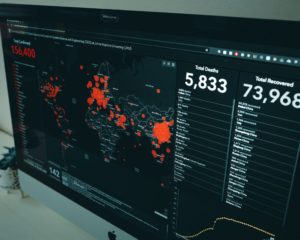One of Khulisa’s recent projects has been to digitize a national health information system. Khulisa assisted a Ministry of Health in installing and using an online information system that records the services both in- and out-patients receive at any clinic across the country. This system is able to generate dashboards that enable hospital directors and health officials make informed decisions about resource allocation and disease prevention.
While working on this project, Khulisa unearthed an issue regarding the facility-based Power BI dashboards. The PowerBI dashboard being used was difficult and tedious to use because if it breaks, one will have to physically go to each facility experiencing an issue to fix it. Instead, we found and used an alternative program, the Department of Health Information Software (DHIS2).

DHIS2 is an open-source software developed by the Health Information Systems Program (HISP) Center at University of Oslo. It is a tool for collection, validation, analysis, and presentation of aggregate and patient-based statistical data, tailored (but not limited) to integrated health information management activities.
DHIS2 allows the user to define their own programs with stages. Programs can be split into two categories: the event program and the tracker program.
The event program records a single event without registration (SEWoR). Individual, anonymous events are tracked through the health system. An example of this would be when recording health cases without registering any patient information into the system.
The tracker program incorporates a single event with registration program (SEWR) and a multi events with registration program (MEWR). The SEWR allows tracking an entity through each individual transaction with the health system. It has only one program stage. An example of this is when keeping record of birth and death certificates. The MEWR allows tracking through each individual transaction with the health system. An example of this is when recording data for a program such as a Mother Health Program with stages for antenatal and postnatal care.
DHIS2 runs on all platforms for which there exists a Java JDK, which includes most popular operating systems such as Windows, Linux, and Mac. DHIS2 allows access to a central network that houses the live data. This enables seamless integration of data across multiple sites, as well as easy access for a technician to resolve issues in the program. DHIS2 is also cost-effective and easily accessible.
DHIS2 software has been a vital catalyst for local clinics to keep track of patients using a web-browser-based, centralized system, and for centralized health departments to understand population health needs in remote areas.